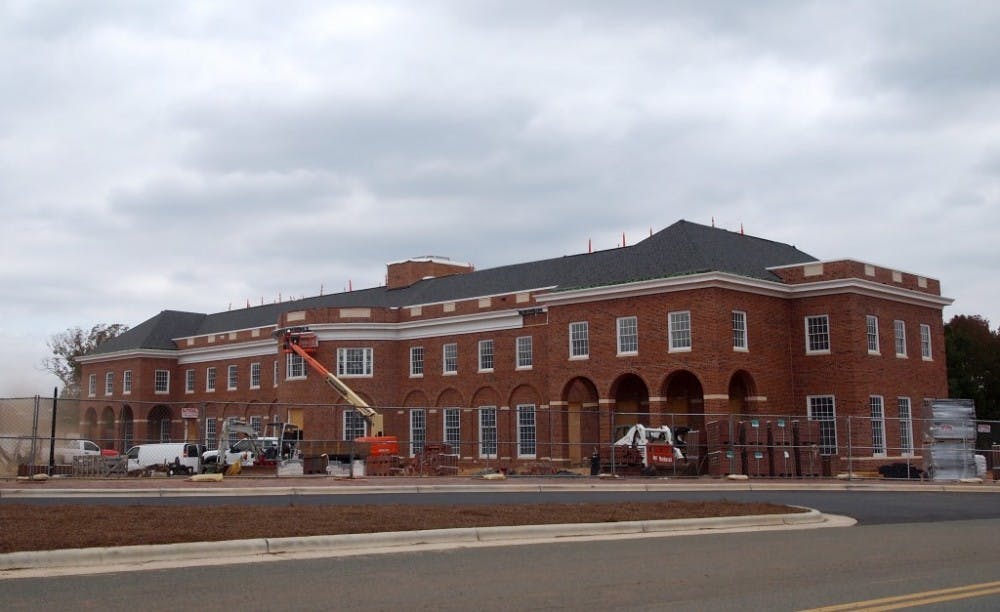On the walk to class, Elon University students are accustomed to running into detour signs, mile-high fences and entire sections of cam-?pus that are closed off. And on early weekday mornings, loud banging and the not-so-distant shouting of construction workers in their element are the norm.
Construction on Elon’s campus in recent years has become more prevalent, as school officials have decided that constant updates are necessary for the university’s future success and prosperity. And while in theory all of these additions should be exciting and new, we must ask if these changes are essential or even warranted. Loud noises aside, the rising tuition prices and excessive change and expansion on cam- pus make some Elon students skeptical that these large additions are right for the student population.
In fact, each year, Elon student tuition fees increase in part because of expansion. Students do not have a choice as to where their money is spent on campus, and most will not see these new buildings up and running until after graduation.
Even if this money is not being directly spent on construction, Elon’s goal of expansion will make tuition prices rise further. The school has been vocal in the past about its priority in making Elon a more established and well-known university nationally. As the school accomplishes this goal of expansion and notoriety, the university will become more competitive and, as a result, more expensive.
While university growth is essential to future success, the speed at which Elon is changing the campus and setting down new groundwork for new buildings can be shocking.
Currently, Elon’s largest expansion project is the new admissions building outside of the Moseley Center. Other upcoming projects include the expansion of the School of Communications and Long buildings. The construction of the admissions building has been in progress for about a year and will contain the main admissions office, as well as several individual office spaces. If construction continues at this rate, no building will be left unaltered.
Taking into consideration the aftermath of this construction, what will happen to the older buildings on campus? For now, the university does not plan on knocking anything down, which means that campus will be more congested and lacking in parking.
The university is also working toward a goal of having 75 percent of under- graduates living on campus, which adds even more to the congestion on campus. With so few students off campus, more complaints of the school being closed off and reserved, or as part of the “Elon bubble,” may grow.


